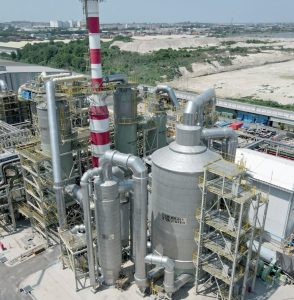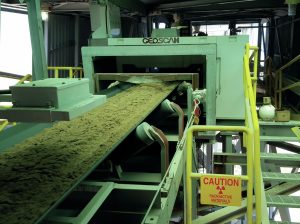
Jansen first production back to mid-2027
BHP is now expecting first potash production from stage one of its Jansen mega project in Saskatchewan, Canada, in mid-2027.

BHP is now expecting first potash production from stage one of its Jansen mega project in Saskatchewan, Canada, in mid-2027.

The progressive closure of smelter capacity in Australia poses potential problems for acid consumers across the country.

BHP has awarded a significant engineering, procurement, and construction management (EPCM) contract to a joint venture between Fluor Australia Pty Ltd and Hatch Pty Ltd. The A$40 million contract is for the first phase of the proposed expansion of BHP's copper smelter and refinery facilities in South Australia, as the company moves towards a final investment decision on the smelter and refinery expansion, currently anticipated in the first half of FY27. The initial stage focuses on strategic planning and development during the project's study phases. Subsequent stages will cover detailed engineering, procurement, and construction management as the project advances.

An ammonium nitrate industry geared around producing explosives for the mining sector is now being joined by a major urea project and a number of renewables-based products for export of green ammonia.

We look at the future of polyhalite mining and its use as a fertilizer following Anglo American’s announcement that investment in its UK-Based Woodsmith mine will fall to zero in 2026 under current plans.

CRU’s 2025 Phosphates Conference – now in its 16th year – will be held in Orlando, Florida, 31 March - 2 April next year. The 2024 event convened in Warsaw was one of the most successful to date (Fertilizer International 519, p4).

Short term supply constraints are dominating acid markets at present, but increasing smelter production across Asia may lead to oversupply in the longer term.

The International Fertilizer Association (IFA) recently published its annual medium-term outlook for the fertilizer market. This followed presentations by Laura Cross and Armelle Gruère of IFA’s Market Intelligence Service at the Association’s Annual Conference in Singapore in late May.

Sophisticated control of phosphates production is now possible thanks to the availability of real-time process analysers. The emergence of laboratory robots is also improving process efficiency and delivering cost savings.
Veolia says that its subsidiary Veolia North America has signed an agreement for the divestment of Veolia North America Regeneration Services, which includes its sulphuric acid and hydrofluoric acid regeneration activities for refineries, to private equity firm American Industrial Partners for $620 million. These activities represented revenues of around $350 million in 2023. The financial closure of the transaction is expected soon. Veolia’s Sulphuric Acid Regeneration Business includes its sulphuric acid and potassium hydroxide regeneration, as well as sulphur gas recovery, and sulphur-based products production businesses.